1920s
Mystery Gadget 20
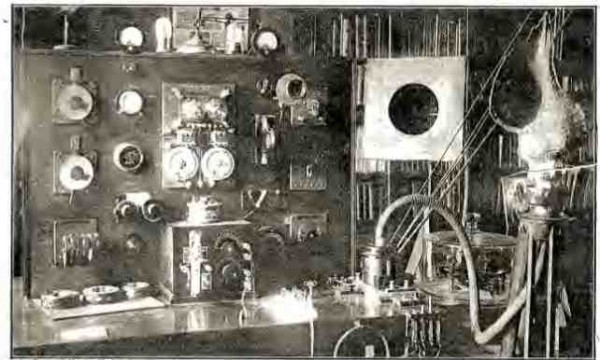
Taking into account the presence of a wired-up conch shell, please explain what this gadget from the 1920s does.
Answer after the jump.
More in extended >>
Posted By: Paul - Sun Mar 16, 2014 -
Comments (10)
Category: Technology, 1920s
The Bald-Headed Men of America
Apparently there have been several instances of the formation of clubs to serve as fraternal organizations for bald men.The New York Times has this 1896 report.
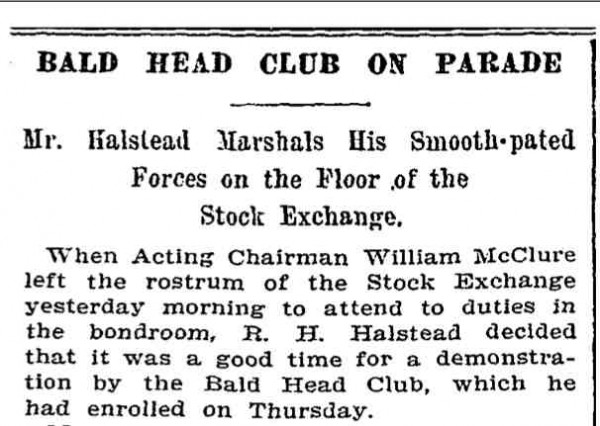
Then comes this account in 1920, also from The New York Times.
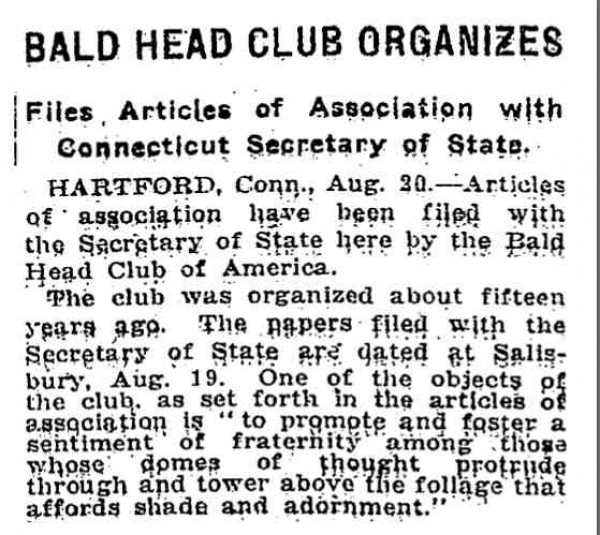
Then comes this report from 1954.
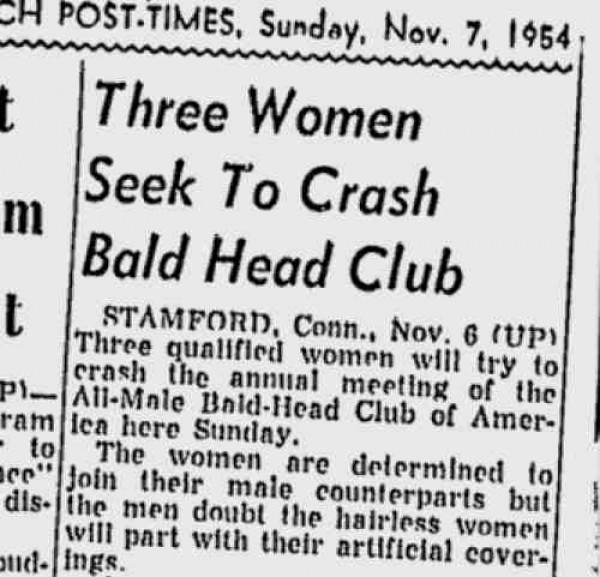
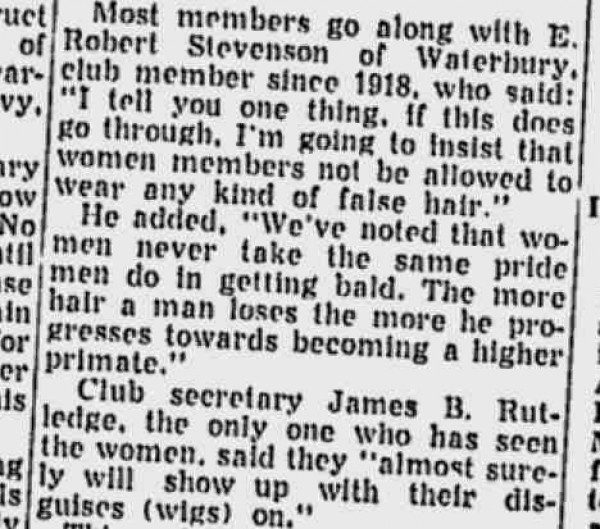
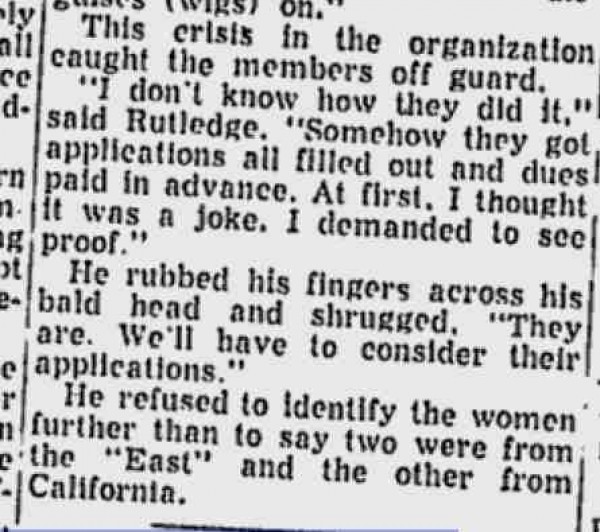
But sometime after that, the original group must have gone under, because in 1972, John T. Capps, III founded the Bald Headed Men of America. They were profiled in a PBS documentary from 1989, as partially shown below.
Apparently, they are still going strong.
Posted By: Paul - Sat Mar 01, 2014 -
Comments (5)
Category: Clubs, Fraternities and Other Self-selecting Organizations, 1920s, 1950s, 1970s, Nineteenth Century, Twentieth Century, Hair and Hairstyling
Toby the Terrapin, Part 2
Back on Jan. 9, I posted about Toby the Piano-Playing Terrapin, owned and exhibited by Alexander Barbee of Savannah, Georgia back in the 1920s.And then, about a week ago, I was contacted by Barbee's great-granddaughter, who reported that she came across my post while searching for info about her great-grandfather. She writes:
My mother could tell you all about Toby, including the story of Toby's birth. He was purportedly born in the hand of William Jennings Bryan (there's more to it). And of course he would wink at the ladies, etc. He is seated at one of my g-g's music boxes (there was an enormous collection of them).
She sent along some higher quality pictures of Alexander Barbee and Toby. In the first picture, Toby is a little hard to see, but you can just make him out on top of the table in the center of the photo (where he's seated at his piano).
WU is proud to be the premier online source of information about piano-playing terrapins!


Posted By: Alex - Tue Feb 04, 2014 -
Comments (4)
Category: 1920s
Hitler tamed by prison
Epic prison board fail: This guy, Hitler. Prison has changed his ways. He won't cause any trouble now!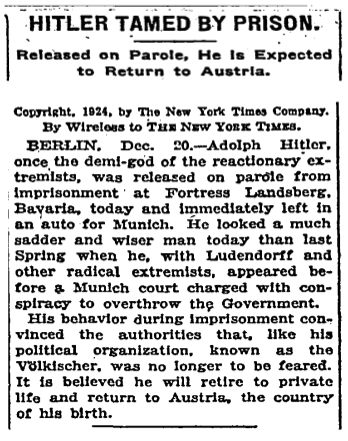
From The New York Times - Dec 21, 1924.
Posted By: Alex - Mon Jan 13, 2014 -
Comments (9)
Category: Predictions, Prisons, 1920s
Seaweed Sweaters
Featured in Popular Science Monthly, June 1921
Both the sweater and the pair of stockings that the girl is holding were made from seaweed that grows in China. Yet they look not unlike woolen garments.
Pine-needles are also being pressed into service; and so are many grasses and leaves. At a recent exhibition of the Commerce Bureau in the Customs House in New York city many grass-made garments were shown.
Posted By: Alex - Fri Jan 10, 2014 -
Comments (7)
Category: Fashion, 1920s
Toby the Piano-Playing Terrapin
A news-wire photo that ran in papers back in January 1925.
I found some more detailed information about Toby the Talented Terrapin in a short article by Zoe Beckley that ran in the Syracuse Herald - Aug 6, 1925:
Toby, however, has escaped this fate by virtue of the rare and great affection which exists between him and his master. He is a small terrapin, and he lived in his master's bath-tub. Each of the diamonds upon his back has been lovingly outlined in gold paint.
When Toby is taken from the bath-tub and into the parlor for the edification of visitors, he is instructed to wink his left eye, and Toby responds properly. Then he is told to cry, and up go his tiny flippers to his tinier eyes, while Toby would appear to be violently sorrowing.
But his crowning achievement is waving his flippers temperamentally over the keys of a tiny music box built to resemble a piano, on which his master has propped him. It would appear to the uninitiate that Toby was making music with all the fire of a Paderewski, albeit minus the hair and the politics. Truly, a talented terrapin.
Also found a picture of Barbee's Terrapin Farm in Streetcars of Chatham County: Photographs from the Collection of the Georgia Historical Society

Posted By: Alex - Thu Jan 09, 2014 -
Comments (8)
Category: Animals, 1920s
Mystery Criminal
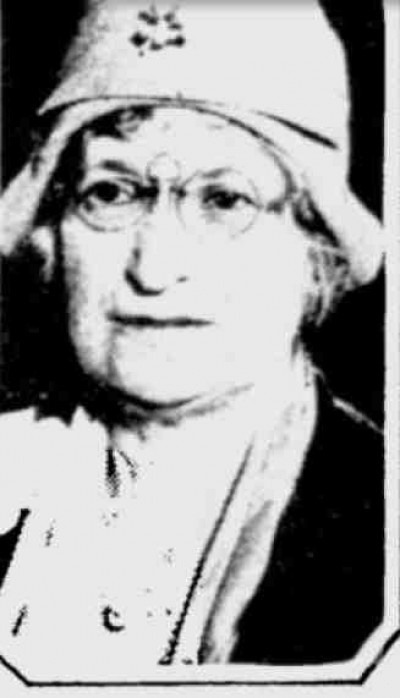
What horrid crime did this nice little old lady commit? Murder? Embezzlement? Drunken driving?
Answer after the jump.
More in extended >>
Posted By: Paul - Mon Dec 02, 2013 -
Comments (7)
Category: Crime, 1920s
Harry Rogers, The Fire Clown
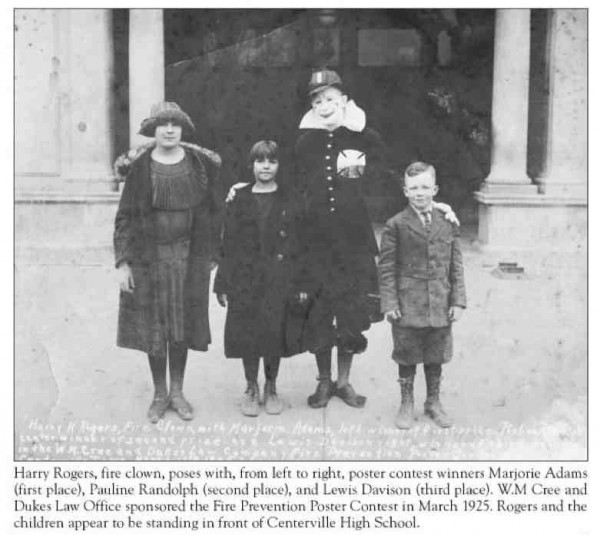
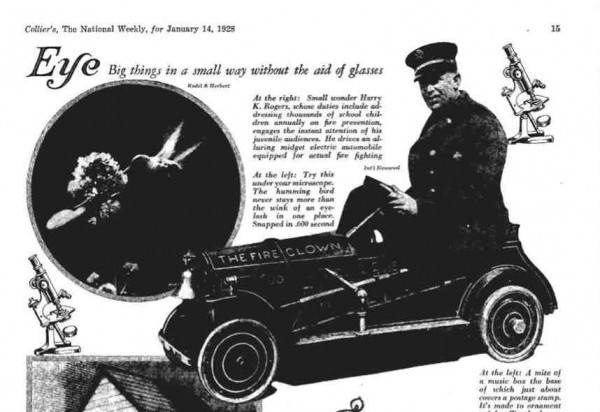
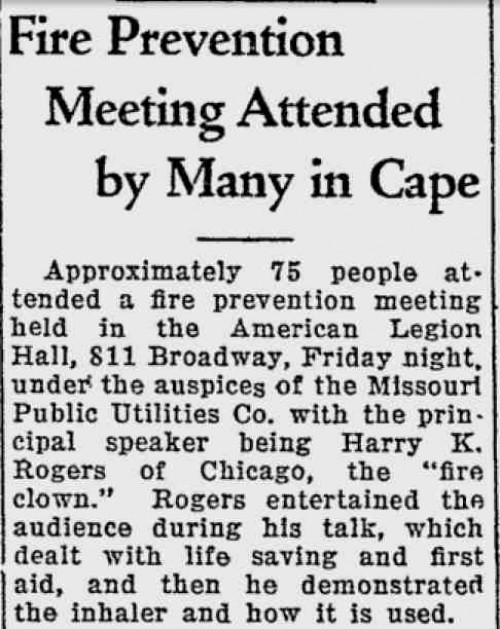
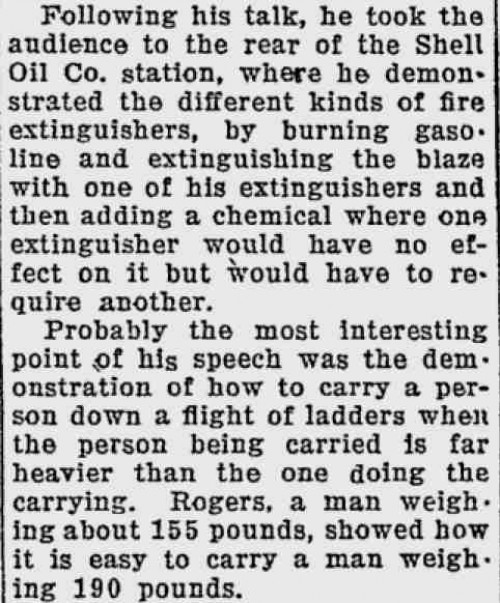
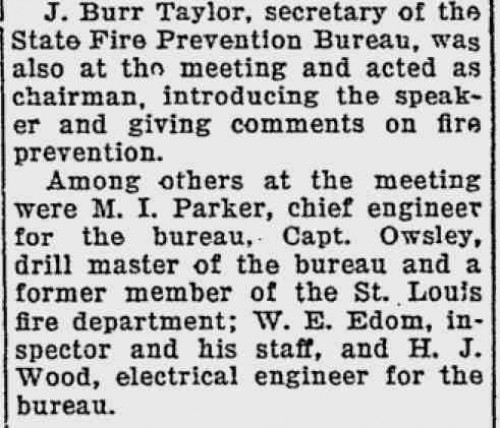
Original article here.
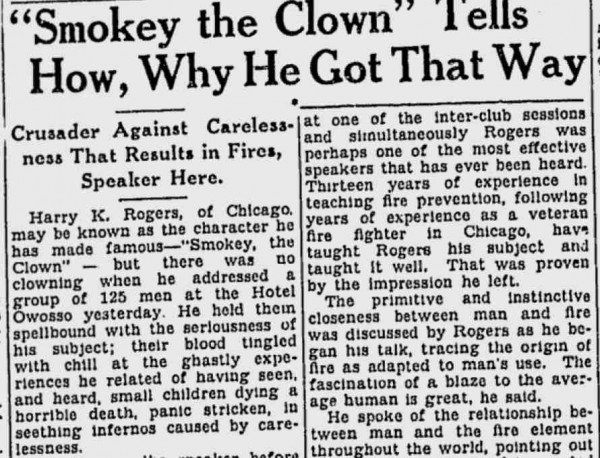
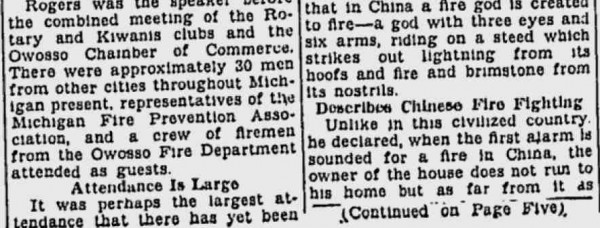
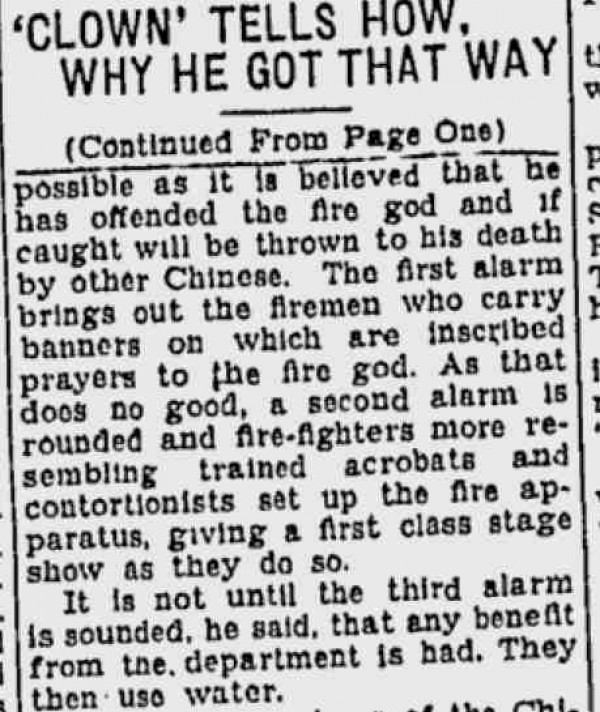
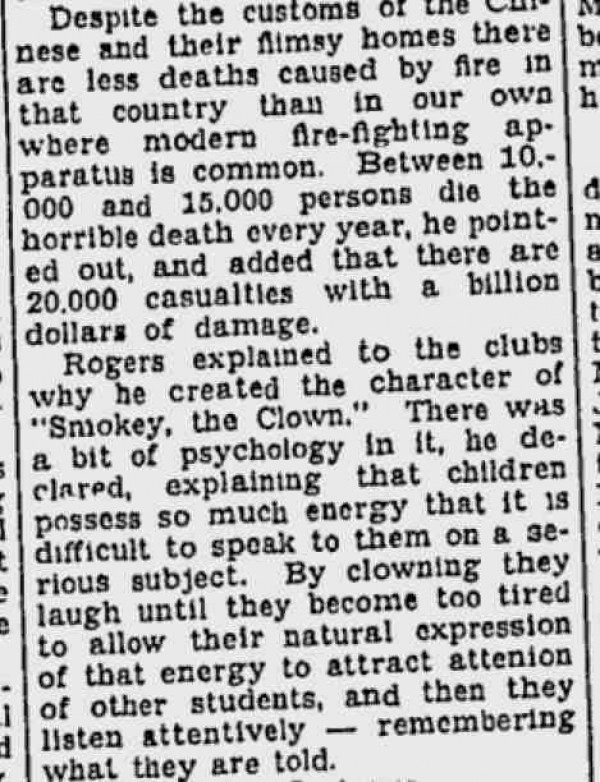
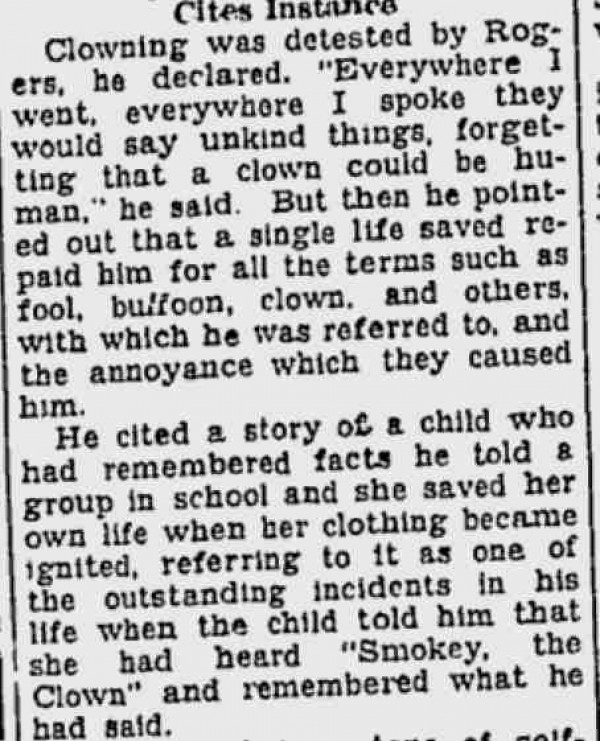
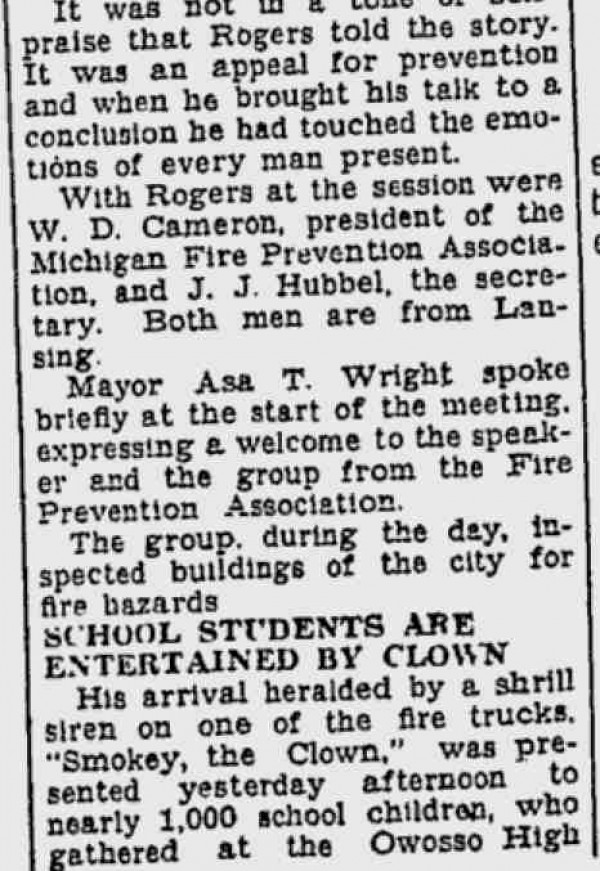
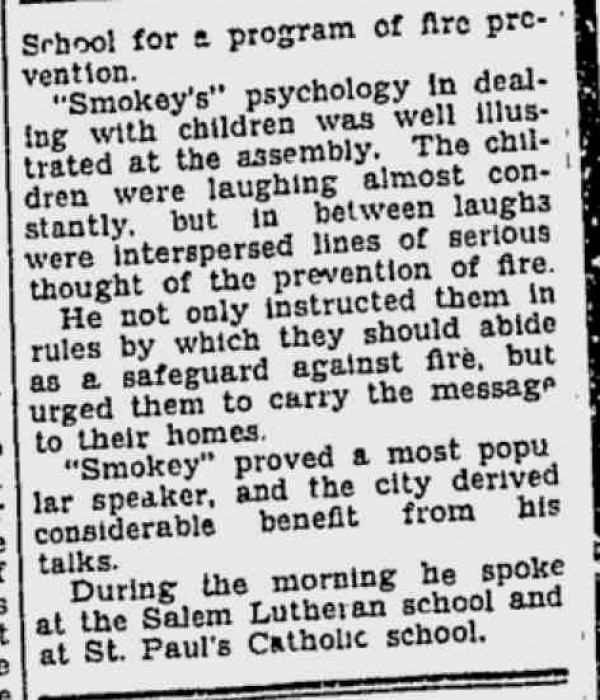
Original article here.
Posted By: Paul - Wed Oct 30, 2013 -
Comments (8)
Category: Clowns, PSA’s, 1920s, 1930s
The Real Geo

(Flickr source.)
A reader known as "Pat@[email protected]" recently wrote in with some good info on an old WU topic:
" I have been a fan of Buckminster Fuller's writings for many years and just recently found out that he actually didn't invent the geodesic dome. It was invented by Walther Bauersfeld, a German engineer, some 30 years earlier for use as the first projection planetarium. Fuller did, however, apply for and was granted the U.S. patents. He took it's design and construction further and is credited with popularizing it. We have one in Fairbanks built in 1966 at a site originally called "Alaskaland" which was built to commemorate the centenial of the purchase of Alaska from Russia in 1867. It's called the Gold Dome and now houses an aviation museum. Also, there were many "golf balls" in the state during the Cold War which were used for radar."
Posted By: Paul - Tue Oct 29, 2013 -
Comments (5)
Category: Architecture, Inventions, 1920s
Propellor Car
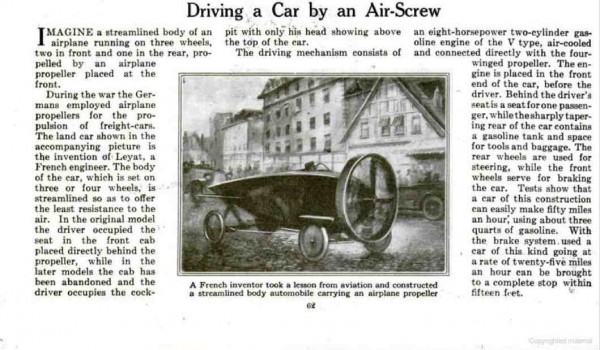
[Click to enlarge]
Imagine the streets of a city filled with these lethal machines!
Original story here.
Posted By: Paul - Sun Oct 27, 2013 -
Comments (4)
Category: Death, Inventions, Motor Vehicles, 1920s

| Who We Are |
|---|
| Alex Boese Alex is the creator and curator of the Museum of Hoaxes. He's also the author of various weird, non-fiction, science-themed books such as Elephants on Acid and Psychedelic Apes. Paul Di Filippo Paul has been paid to put weird ideas into fictional form for over thirty years, in his career as a noted science fiction writer. He has recently begun blogging on many curious topics with three fellow writers at The Inferior 4+1. Contact Us |




